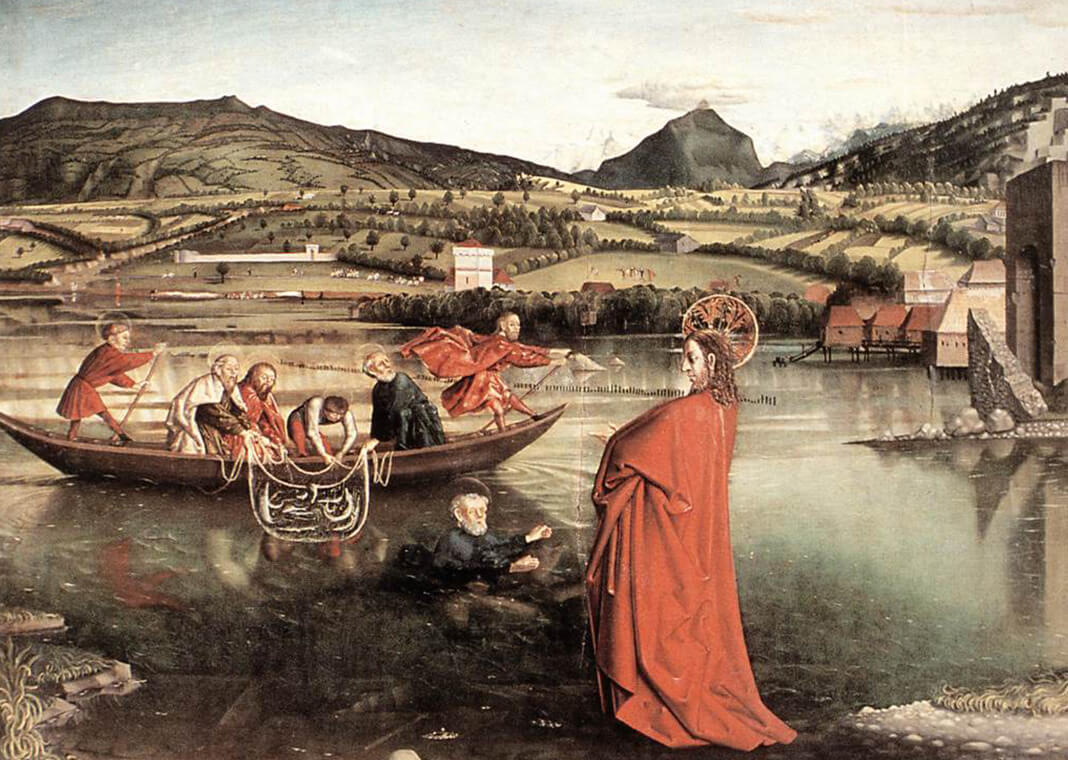 I’m often struck by friends who note how much harder it can be to “feel” Easter than to experience Lent. Somehow the reflection on sin and suffering comes more easily to many than experiencing joy and redemption. However, in this we are not alone: the disciples, too, have difficulty at first absorbing the fullness of Resurrection joy.
I’m often struck by friends who note how much harder it can be to “feel” Easter than to experience Lent. Somehow the reflection on sin and suffering comes more easily to many than experiencing joy and redemption. However, in this we are not alone: the disciples, too, have difficulty at first absorbing the fullness of Resurrection joy.
In many Resurrection scenes, we find Jesus offering reconciliation. In John’s Gospel, Jesus goes to the disciples who have locked themselves into the upper room. The disciples are fearful (John 20:19). Later, Jesus speaks to Thomas and to Peter, who each have their own kinds of difficulties with the Resurrection: Thomas doubts and Peter is in need of knowing Jesus’ love for him after his betrayals. Peter may have wondered: Why was I so afraid? Why did I go back on my promise to stand by Jesus? We, too, in our own lives may wonder: How did a perfectly good situation unravel into such difficulty? Often suffering, betrayals, and other evils defy our attempts to give them logic.
No wonder, then, that Jesus’ appearance to the disciples is not immediately met with a sense of “all is well.”
Remarkably, Jesus is uninterested in talking about the past. Instead, he is focused on offering healing, peace, and love in the present, with an eye to the future. Jesus’ response to all of this confusion is not to dwell on the past or to go into the reasons why his friends betrayed him or what could have been done differently. Instead, Jesus offers peace, reconciliation, and mission.
To the disciples in the upper room, he offers peace and then asks them to pass on that peace in forgiving others’ sins (John 20:21–23). He breathes on them, an intimate way to share the Spirit. To Thomas, he offers the closeness of touch and a chance to believe again and then recommends having faith in the absence of sight (John 20:27–29). In my favorite scene, Jesus eats breakfast on the beach with seven of the disciples and then asks Peter three times whether he loves him. Jesus gives him a chance to speak for love, in place of the three denials he had spoken earlier. “Do you love me?” and “Lord, you know that I love you” are like a choral refrain. And Jesus follows each refrain with mission: feed my lambs, tend my flock, and follow me.
In all three cases, Jesus offers peace and reconciliation in an intimate and personal way and then asks the disciples to pass on the very gifts that they have been given: forgiveness, belief, and selfless love. He does it all slowly and in an easy and unhurried way, for example, walking with the disciples on the way to Emmaus before revealing himself, or eating breakfast on the beach before talking to Peter.
These are good guides for us, too, for entering into the fullness of Easter. We can reflect on the love of God, who does not ask why but instead forgives, heals, invites, and loves. And then we can practice forgiveness, faith, and selfless love in our actions and pass those on. We can give ourselves time to see God in the Resurrection and give ourselves the same gifts of patience and simplicity that Jesus offers his friends. In this way, we live our way into Easter joy.
Image: Konrad Witz, The Miraculous Draught of Fishes, 1444
